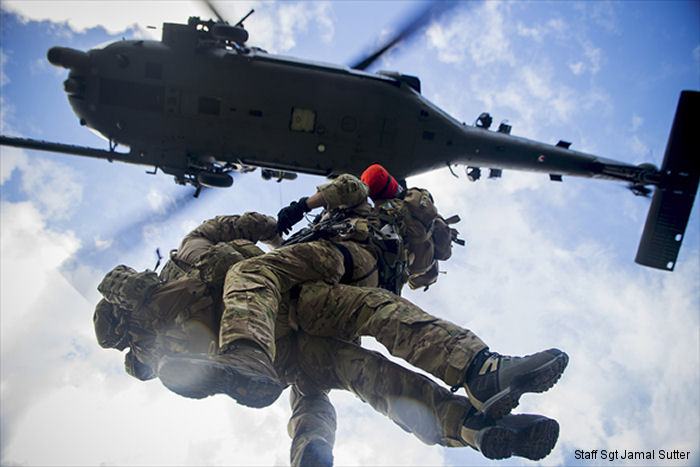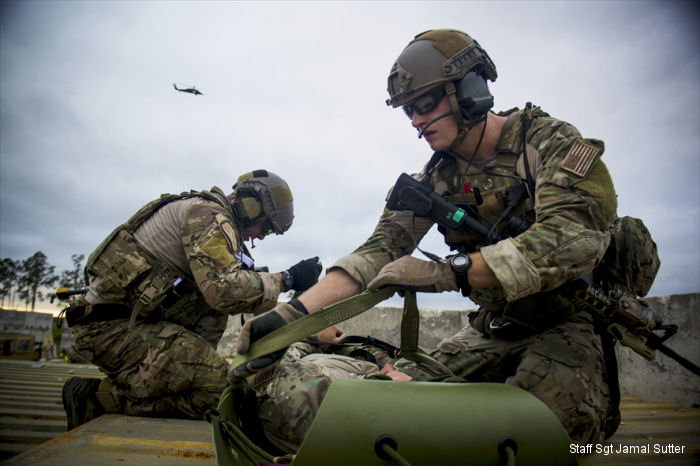US Air Force, November 25, 2015 - FALLS CHURCH, Va. By Tahira Hayes - The Air Force Medical Service is restructuring flight and operational medicine by separating primary care and occupational medicine services into two distinct clinics, with the goal of improving care and creating more efficient and patient-centered workflows.
This new concept, known as the base operational medicine clinic (BOMC), will establish dedicated clinics for Airmen exams.
“Right now we repurpose primary care teams to do this, but because BOMC is an exams-only clinic, we can organize around those workflows. Instead of patients having to go to the hospital and thread all the exam pieces, we’ll thread those in advance for them,” said Col. Anthony Tvaryanas, the project manager at the 711th Human Systems Integration Directorate at Wright-Patterson Air Force Base, Ohio.
Keesler AFB, Mississippi, is serving as the pilot site for BOMC, the first of its kind in the Air Force. The first phase of the project was launched at Keesler in 2013, where teams are currently in the process of launching and testing phase 2 and 3. Planners have also set up beta test sites for the BOMC1 concept at Seymour Johnson AFB, North Carolina; Joint Base McGuire-Dix-Lakehurst, New Jersey; and Ramstein Air Base, Germany, to validate standard clinic products created at Keesler. BOMC is expected to be implemented at all military treatment facilities (MTF) in phases through 2017.
Thus far, the patient satisfaction results at Keesler AFB are promising. Out of 638 patient surveys collected in the last year, 98 percent are either "very satisfied" or "satisfied" at the conclusion of their encounter with the BOMC.
In the past, flight and operational medicine clinics required patients to travel between different MTF departments to accomplish their pre-preplacement exams and period/post exposure assessments. Under BOMC, all the exam components will be centralized.
“We’ve taken all of those out of the primary care clinics and created standardized workflows and algorithms. We’re able to make a one-stop shop solution when people need multiple appointments at the same time. So we decrease any redundant encounters that were happening before across the primary care clinics,” said Capt. Colby Uptegraft, the flight commander of the BOMC at Keesler.
Centralizing these exam clinic appointments also improves care in the primary care facilities. Since November 2014, 7,700 health assessment appointments at Keesler have been moved from primary care providers to BOMC clinics, allowing more space for sick patients.
Although patient satisfaction is high at Keesler, a lot of the work is going on behind the scene that patients may not notice. Roles and responsibilities of staff are now more defined and resources are more appropriately allocated. Technicians are now reviewing records instead of providers.
“That means providers doing provider work, nurses doing nurse work and technician doing tech work, and the lines are less blurred,” Uptegraft said.
Ultimately, this means records are more up-to-date and better care is provided. “When you do the work right, it makes the next steps easier,” Tvaryanas said.
Over the past year Keesler has been tracking metrics, a review of medical records found chronic medical conditions missed on 8 percent of patients. If extrapolated Air Force-wide, this means around 25,000 have potentially disqualifying medical conditions that have never been reviewed for a potential medical evaluation board (MEB). A more thorough records review process would provide safer and more reliable medical care for members.
These improvements are also better for the Air Force because these previously undocumented conditions could result in a mission compromise if, for some reason, that person’s medical condition interferes with the mission at large while they’re deployed, Uptegraft said.
“We’re also trying to change the culture of innovation on the medical side of the Air Force,” Uptegraft said. “BOMC emphasizes to constantly reassess your workflows to increase the value of what you do.”
Ultimately, BOMC will improve the value of services delivered and is an important step in the evolution of the Air Force Medical Home, an all-encompassing health care delivery system that is population focused, integrates data-driven decision making, and ensures patient-defined outcomes.
This new concept, known as the base operational medicine clinic (BOMC), will establish dedicated clinics for Airmen exams.
“Right now we repurpose primary care teams to do this, but because BOMC is an exams-only clinic, we can organize around those workflows. Instead of patients having to go to the hospital and thread all the exam pieces, we’ll thread those in advance for them,” said Col. Anthony Tvaryanas, the project manager at the 711th Human Systems Integration Directorate at Wright-Patterson Air Force Base, Ohio.
Keesler AFB, Mississippi, is serving as the pilot site for BOMC, the first of its kind in the Air Force. The first phase of the project was launched at Keesler in 2013, where teams are currently in the process of launching and testing phase 2 and 3. Planners have also set up beta test sites for the BOMC1 concept at Seymour Johnson AFB, North Carolina; Joint Base McGuire-Dix-Lakehurst, New Jersey; and Ramstein Air Base, Germany, to validate standard clinic products created at Keesler. BOMC is expected to be implemented at all military treatment facilities (MTF) in phases through 2017.
Thus far, the patient satisfaction results at Keesler AFB are promising. Out of 638 patient surveys collected in the last year, 98 percent are either "very satisfied" or "satisfied" at the conclusion of their encounter with the BOMC.
In the past, flight and operational medicine clinics required patients to travel between different MTF departments to accomplish their pre-preplacement exams and period/post exposure assessments. Under BOMC, all the exam components will be centralized.
“We’ve taken all of those out of the primary care clinics and created standardized workflows and algorithms. We’re able to make a one-stop shop solution when people need multiple appointments at the same time. So we decrease any redundant encounters that were happening before across the primary care clinics,” said Capt. Colby Uptegraft, the flight commander of the BOMC at Keesler.
Centralizing these exam clinic appointments also improves care in the primary care facilities. Since November 2014, 7,700 health assessment appointments at Keesler have been moved from primary care providers to BOMC clinics, allowing more space for sick patients.
Although patient satisfaction is high at Keesler, a lot of the work is going on behind the scene that patients may not notice. Roles and responsibilities of staff are now more defined and resources are more appropriately allocated. Technicians are now reviewing records instead of providers.
“That means providers doing provider work, nurses doing nurse work and technician doing tech work, and the lines are less blurred,” Uptegraft said.
Ultimately, this means records are more up-to-date and better care is provided. “When you do the work right, it makes the next steps easier,” Tvaryanas said.
Over the past year Keesler has been tracking metrics, a review of medical records found chronic medical conditions missed on 8 percent of patients. If extrapolated Air Force-wide, this means around 25,000 have potentially disqualifying medical conditions that have never been reviewed for a potential medical evaluation board (MEB). A more thorough records review process would provide safer and more reliable medical care for members.
These improvements are also better for the Air Force because these previously undocumented conditions could result in a mission compromise if, for some reason, that person’s medical condition interferes with the mission at large while they’re deployed, Uptegraft said.
“We’re also trying to change the culture of innovation on the medical side of the Air Force,” Uptegraft said. “BOMC emphasizes to constantly reassess your workflows to increase the value of what you do.”
Ultimately, BOMC will improve the value of services delivered and is an important step in the evolution of the Air Force Medical Home, an all-encompassing health care delivery system that is population focused, integrates data-driven decision making, and ensures patient-defined outcomes.
See also |






